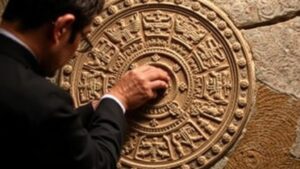Comparing myths across cultures to locate lost cities and tunnel systems.
Comparing Myths Across Cultures to Locate Lost Cities and Tunnel Systems
The allure of lost cities and hidden tunnel systems has captivated the human imagination for centuries. From the legendary Atlantis to the sprawling underground networks beneath cities like Paris and Rome, myths and folklore often provide tantalizing clues about these forgotten places. This article will explore how comparing myths from various cultures can lead us to rediscover lost cities and uncover ancient tunnel systems, supported by specific examples and historical contexts.
The Role of Myths in Cultural Heritage
Myths often serve as a repository of collective memory, embodying the values, fears, and aspirations of a culture. can offer insights into the geographical, environmental, and social realities of the time they were created. For example, the story of El Dorado, the famed city of gold sought by Spanish conquistadors in the 16th century, highlights the intersection of greed, exploration, and the indigenous cultures of South America.
Lost Cities in Myths
Numerous myths detail lost cities that have yet to be found. Notable among them are:
- Atlantis: First mentioned by Plato around 360 B.C., this advanced civilization is said to have sunk into the ocean due to a catastrophic event. Scholars and treasure hunters continue to seek its location, speculating it might lie beneath the Mediterranean or even Antarctica.
- Kahokia: Features prominently in Native American history as a site of a large pre-Columbian city near modern-day St. Louis. Myths surrounding its decline and disappearance speak to environmental challenges and societal collapse.
- Shangri-La: From James Hiltons novel Lost Horizon published in 1933, this mythical utopia is often linked to remote locations in the Himalayas, inspiring quests for a place believed to hold eternal youth and enlightenment.
Tunnel Systems: Reality or Myth?
Tunneling systems frequently appear in various cultures myths and histories. r existence is often verified by archaeological evidence, yet the extent and purpose of these tunnels can vary dramatically. Examples include:
- The Catacombs of Paris: Spanning approximately 200 miles beneath the city, these tunnels were originally limestone quarries. They became tombs in the late 18th century, housing the remains of over six million Parisians. Hidden within their walls are many myths and legends, including tales of hauntings and ghostly apparitions.
- The subterranean cities of Capp
Further Reading & Research
Historical Resources
Royal Geographical SocietyHistorical expedition archives and researchNational Geographic SocietyExploration history and modern discoveries


